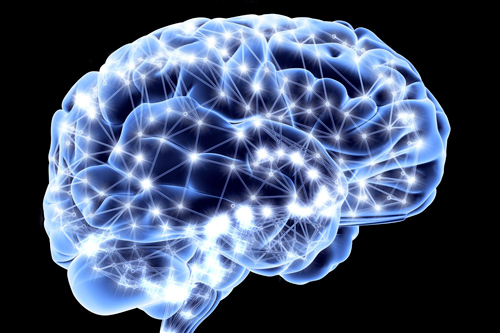
If you want to know what’s the matter with your brain, look no further than your gray matter. You’ll have to look at an MRI scan to do it, though.
A recent study at Harvard University showed that significant differences occur in the brains of people who meditate. That’s good news for meditators and not so good news for people like me – restless people whose minds whirl from one thought to the next and whose bodies would rather vacuum the carpet or take out the trash than sit calmly akimbo or lie prone and say “ohm.” Besides, how can I gain steps on my FitBit exercise tracker if I’m sitting down or lying in bed meditating?
The Harvard study represents a wake-up call to those of us who refuse to settle down to a nice, 20-minute relaxation session each morning before work or at night before bed. Neuroscientists found that it took an average of less than 30 minutes per day for as few as 8 short weeks to see a measurable difference in the brains of people who meditate. The relaxed group didn’t just enjoy feeling….well, more relaxed. They also showed an increase in the volume of their gray matter. Their gray matter was more dense in the hippocampus, the region that is responsible for compassion, learning, and introspection. Moreover, their cerebral cortexes were thicker, which results in better focus, attention, and emotional integration. Turns out, meditators, even amateur meditators, have an advantage in the area emotional intelligence. That’s something we all need.
“It is fascinating to see the brain’s plasticity and that, by practicing meditation, we can play an active role in changing the brain and can increase our well-being and quality of life,” says Britta Hölzel, first author of the paper and a research fellow at MGH and Giessen University in Germany.
The news is startling. We already know that monks have measurably thicker cerebral cortexes than the rest of us. And I can handle that. But my next door neighbor? My postman? The banker down the road? They all meditate. They all have a thicker cerebral cortex than mine? This simply cannot be. But it is, and the research bears it out.
In fact, one study published in Science Daily concluded, “The more gray matter you have in the decision-making, thought-processing part of your brain, the better your ability to evaluate rewards and consequences.” That means an increase in gray matter represents an increase in executive functioning, self-control, and the ability to perceive possible outcomes. Those kinds of improvements mean something to me.
I’ve always said that active meditation is the only kind I can stand – folding laundry, emptying the dishwasher, opening the mail… But now I’m motivated to slow down and focus on relaxation. The brain benefits are enough to convince me to try again. Like the Harvard research subjects, I’ll try it for 8 weeks for a total of 27 minutes per day, and I’ll aim toward creating a thicker cerebral cortex and denser accumulation of gray matter.
If I have trouble, I can turn to my smartphone. Learning to meditate? There’s an app for that. HeartMath Institute has created “The HeartMath Meditation Assistant with Inner Balance.” It aims to help the new user learn to meditate, track progress, and improve practice.
It’s never to late to learn, and my FitBit can wait. It’s time to meditate.
Click here to get inspired by Rose’s easy steps to positively change your mind


